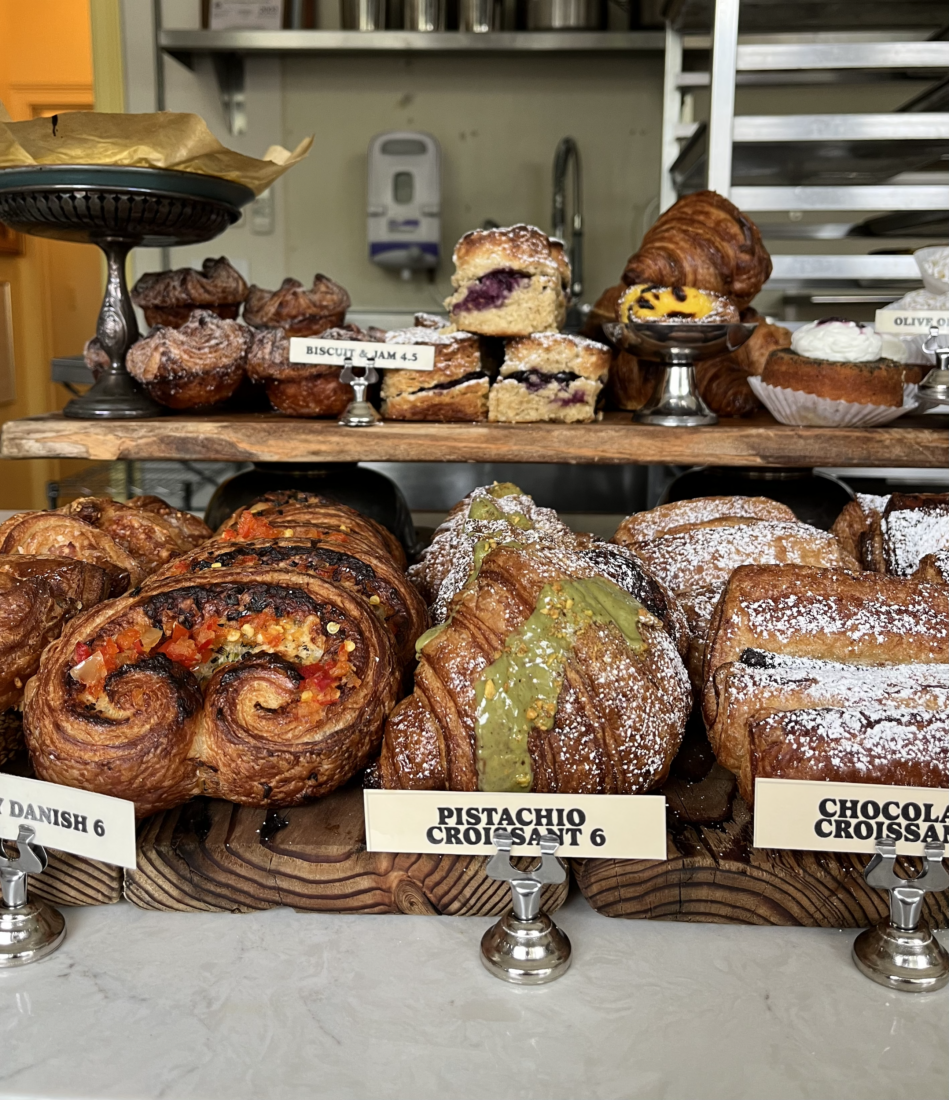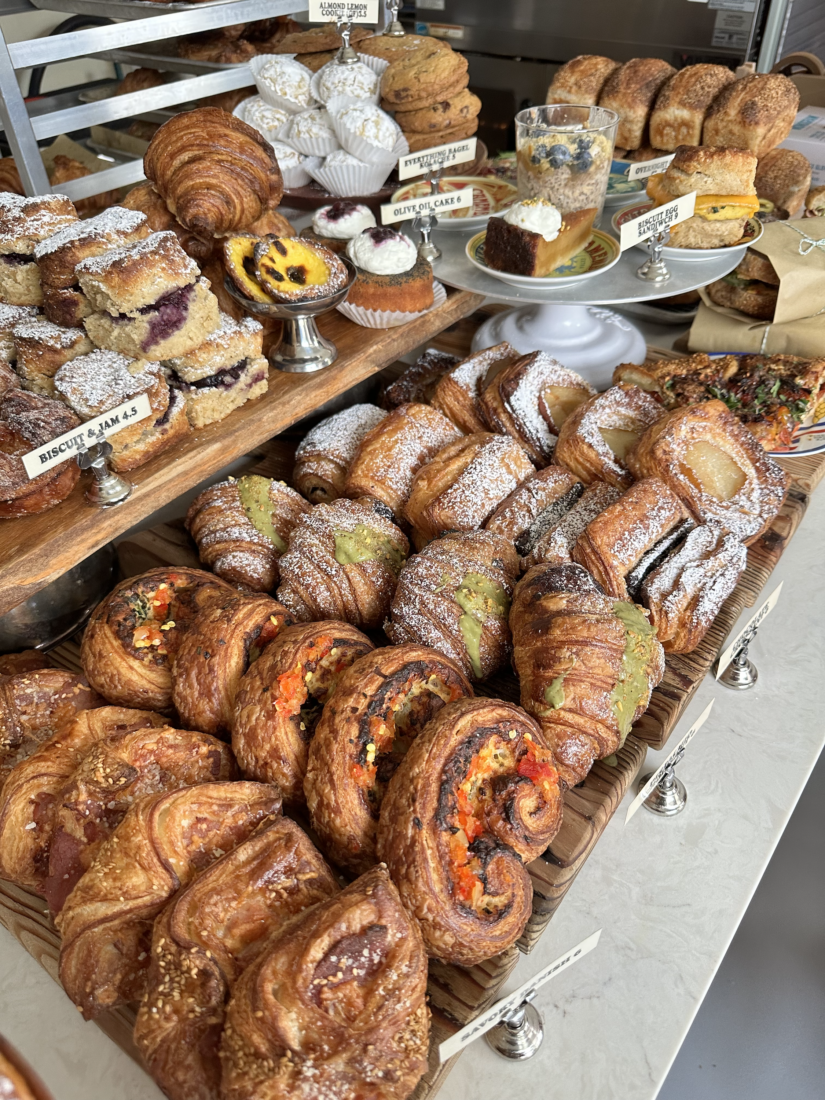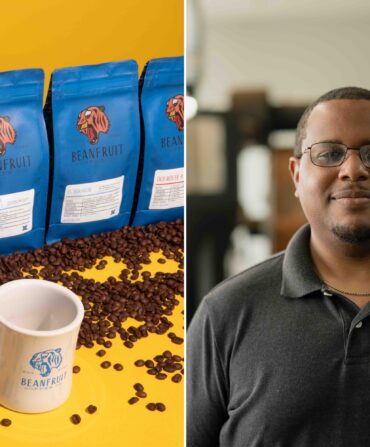Baking croissants is not for the faint of heart, and not just because of the one-to-three-day timeline. But with the right preparation and ingredients, sweet success can be yours. Below, a pair of the South’s best pastry chefs share their croissant know-how. Some highlights: Use quality ingredients, never skimp on butter, and keep a cool kitchen (and head).
Meet the pros
For the past three years, chef Keaton Vasek has steered confectionery operations at the Continental, chef Sean Brock’s Nashville fine-dining concept. One of the Continental’s most scrumptious creations is a twice-baked coconut croissant, which is made from soaking leftover chocolate croissants in coconut and rum, piping in a frangipane with shredded coconut, baking again, and topping with lime zest.

With a background in savory cuisine, crossing over to the sweet side was a bit daunting for Welton’s Tiny Bakeshop co-owner Hannah Welton. The Charleston, South Carolina, chef worked in the kitchen of Brock’s Husk prior to taking a post at Hartwood in Tulum, Mexico. Welton’s, her most recent venture, opened in Charleston in October 2022 and has proved to be an educational experience, teaching through trial and error—and practice, practice, practice.
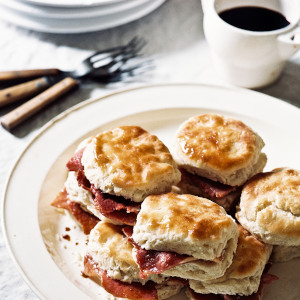
Chill out
In order to maintain a workable dough, Welton recommends keeping your baking area at 68 to 70°F (and no higher than 73°F). “The goal is to create a work environment that your croissant dough is happy in. Not too warm, not too cold, and not too humid,” she says. Ultimately, you should be able to roll out the dough and have it still hold its shape. “Be assertive but gentle,” she says of the rolling technique—though the same applies to your mindset.
Lamination: a labor of love
Welton has been making croissants since 2019 but upgraded her equipment in recent years, using a dough-sheeter machine to laminate her pastry dough into a papery-thin ten to five millimeters. The rest of us are stuck using our own hands, which requires a bit more elbow grease.
Lamination, a process even the pros struggle with from time to time, is necessary to produce the flaky croissants we know and love. Essentially, butter is shaped into a block and encased in pastry dough, and everything is rolled out and folded numerous times in order to layer the butter and dough. Between each series of folding and rolling, chilling is required to keep the dough relaxed and cool. But the time commitment is worth it: Once the dough enters the oven, the heat causes the water content in the butter to evaporate, which generates steam. That steam allows the dough to rise and, as a result, forge flaky layers.
Vasek recommends shaping the croissants the night before, then allowing them to rest in the fridge overnight. After this, let the dough proof at room temperature for two and a half to three hours to give it sufficient time to rise and relax.
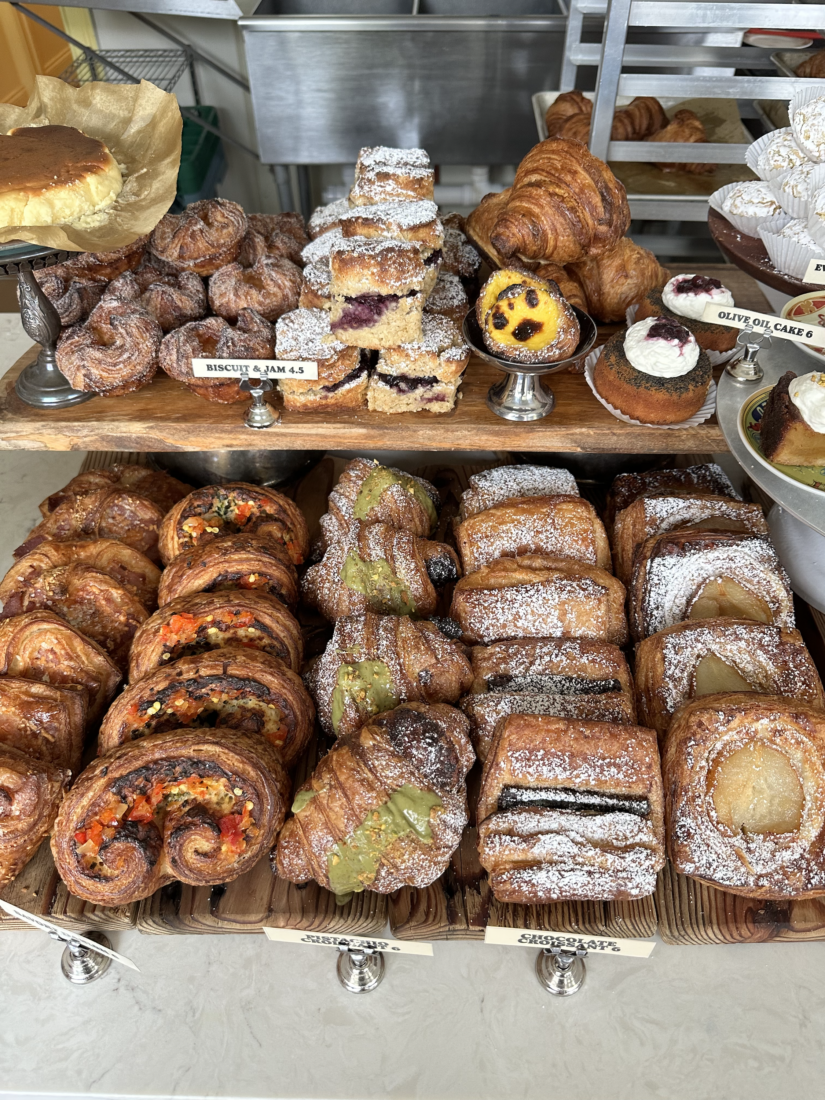
Rise to the occasion: Use good flour and butter
Flour is the foundation of croissant dough, so choose wisely. King Arthur makes the top of Welton’s list.“It’s milled to a science and consistently the same product,” she says of the brand. She uses a sourdough starter to leaven her croissants, but home bakers need not worry—using commercial yeast (the stuff in the packet) is just fine, and much easier.
While most chefs use bread flour or self-rising flour when baking croissants, Vasek uses all-purpose flour because it allows for more structure throughout the lamination process and results in a softer dough.
Do not budget your butter, in regard to quantity or quality. Welton personally reaches for sticks with 80 to 82 percent butterfat. The higher the fat, the lower the moisture content—a dynamic that contributes to the rich, silky mouthfeel and the buttery film that clings to croissant-carrying fingers. “If you’re going to go through the labor and love of making croissants, you have to buy good butter,” Welton stresses, citing Plugrà and Kerrygold as two top-tier brands.
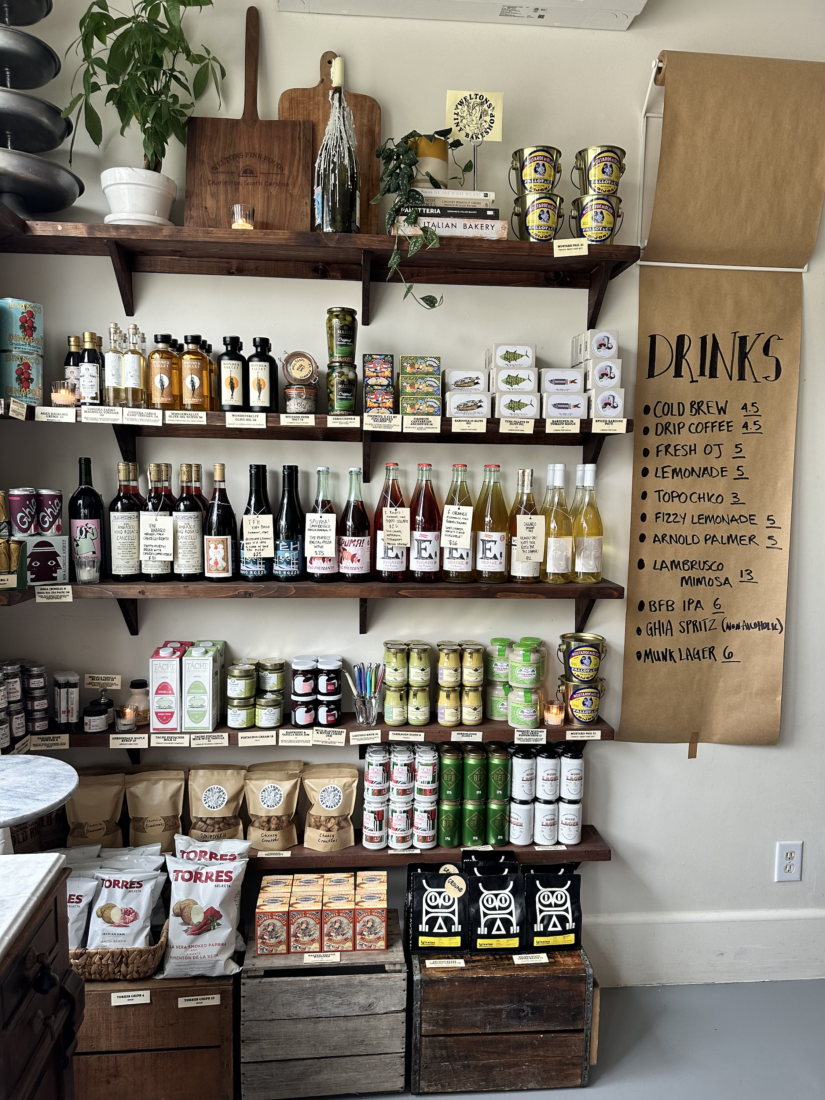
Work surface: What you knead to know
When settling on a dough workspace, many home bakers gravitate toward their kitchen’s granite or marble countertops. However, a wooden board is the perfect canvas for working with croissant dough, Vasek says; pastry doesn’t adhere to it and the wood maintains a stable temperature. It’s also important to not over-flour the dough or the workspace because the layers will not adhere to each other.
Don’t forget the eggs
Brushing croissants with egg wash might seem like an afterthought, but don’t skip this step. Croissants at Welton’s Tiny Bakeshop receive two coatings of egg wash in order to achieve a deep golden-brown color and a crusty outer shell, which contrasts beautifully with the inner light, fluffy layers.
Waste not, want not
Welton encourages bakers to repurpose their imperfect creations, and she sings the praises of fillings and their ability to liven up a lackluster pastry. (A particularly popular treat at Welton’s is the heavenly pistachio croissant, which features an Italian pistachio Nutella-esque cream inside.) She also suggests using croissants for sandwiches, toasting them and topping with a schmear of peanut butter and a drizzle of honey, or making croissant bread pudding.
